North Junior High School: A Result Of The 1924 Columbia University Study, Eventually Becomes North Elementary
One of the 1924 Columbia University study recommendations to the Watertown City School District was to build North Junior High School and its counterpart on the other side of the river, South Junior High School.
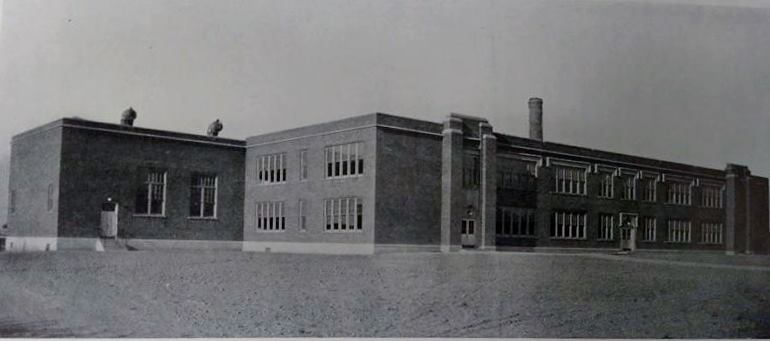
The topic of a junior high school would first be noted before the study, in the January 3, 1923 Watertown Daily Times article–
In regard to the Junior High School proposal, the community has been advancing toward that point for some time. This does not mean that we are called upon to begin the construction of a series of new buildings for junior high schools, but there could be a certain reassignment and allocation of pupils in such a way that the school system could be made even more effective. The old Cooper Street School could readily serve as a Junior High school in which the experiment could be carried out.
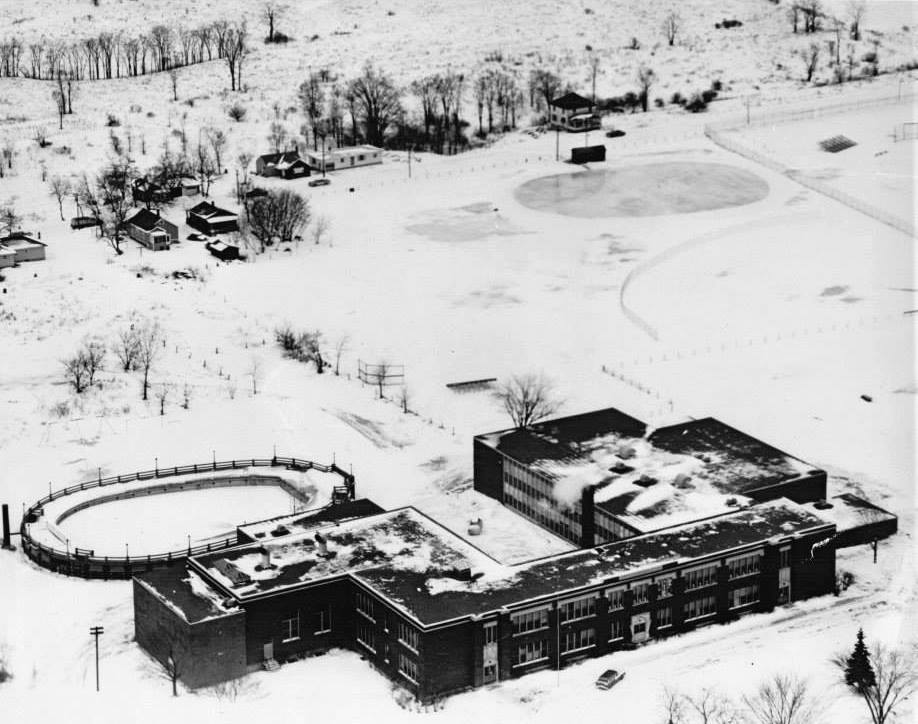
Nine months later, the discussion was brought up again, this time at the city’s North Side Improvement League, documented in another WDT article—
Many members of the North Side Improvement League are beginning to agitate a North Junior High School for Watertown and it is expected that the matter will be brought before a meeting of the league at an early date. People on the north side of the river point out that many cities smaller than Watertown have a junior high school in another section of the city to help accommodate the children who live some distance from the business center.
At present, there are four grade schools on the north side: Cooper Street School, Meade Street School, Lansing Street School, and Pearl Street School. All of these schools are crowded to capacity every year and it is necessary for the children from the Cooper Street school after graduating to attend the Watertown High School on Sterling Street, which is about a mile from the home of the nearest pupil on the north side.
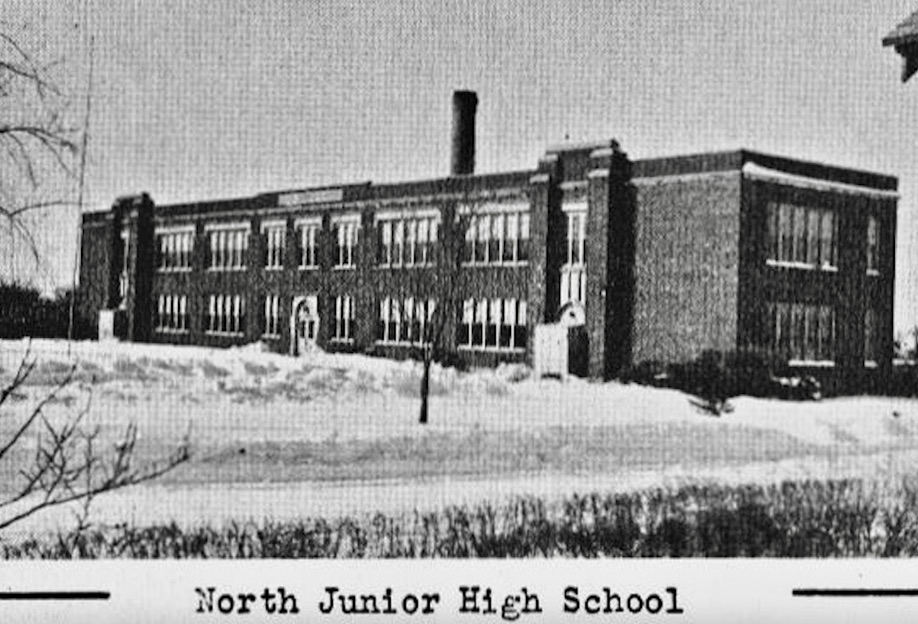
The final push would come from the 1924 survey conducted by the Teachers’ College of Columbia University on the Watertown City School District. Some of the study’s findings are in the Boon Street and Academy Street school listings. The major points posted in the December 23, 1924, Watertown Daily Times included–
The expenditure of $1,000,000 within the next three years, for the construction of two new junior high schools, on the north side of the river and one on the south side; the rebuilding of the old section of Boon Street school, certain minor changes in the high school building and the construction of a new school to replace the Mullin Street school.
That the board of education is elected by the people and that complete responsibility for the finances and well as management of the schools be placed upon this body.
Courses of study should be revised so as to provide more liberal education for children and for their more regular progress through the school system. There are too many children too old for the grade which they are found.
The erection of a south junior high school and a school to replace the Mullin Street school will make it possible to absorb the Flower Avenue enrollment in these new and other adjoining buildings.

Junior High School Program
At present, there are 846 children of grades 7, 8 and 9 living on the south side of the Black river. There are 375 children living north of the Black river who are attending the same-grades in the public schools.
In planning the buildings it will be wise therefore plan in terms of this increase in enrollment which has always followed the section of Junior High schools in other cities.
The north Junior High school should be placed to care for approximately 450 to 500 children. The south Junior High school should be planned to take care of 850 to 900 children. The building of these two schools will relieve the present overcrowding in the senior High School and will obviate the necessity of the continuation in use of undesirable rooms in the senior High school.
The 7th and 8th grades will be removed from the elementary schools thus leaving a number of rooms vacant in these elementary buildings.
By August 1929, both schools were ready to open for their first day of classes in September. North Junior underwent some design changes, lessening its size—something that, in hindsight, was probably regretted as further expansion would be necessary. Nevertheless, the school was finished ahead of schedule, and the John Quincy Adams swimming pool was built concurrently adjacent to North Junior, which it was often referred to as though actually named after its benefactor.
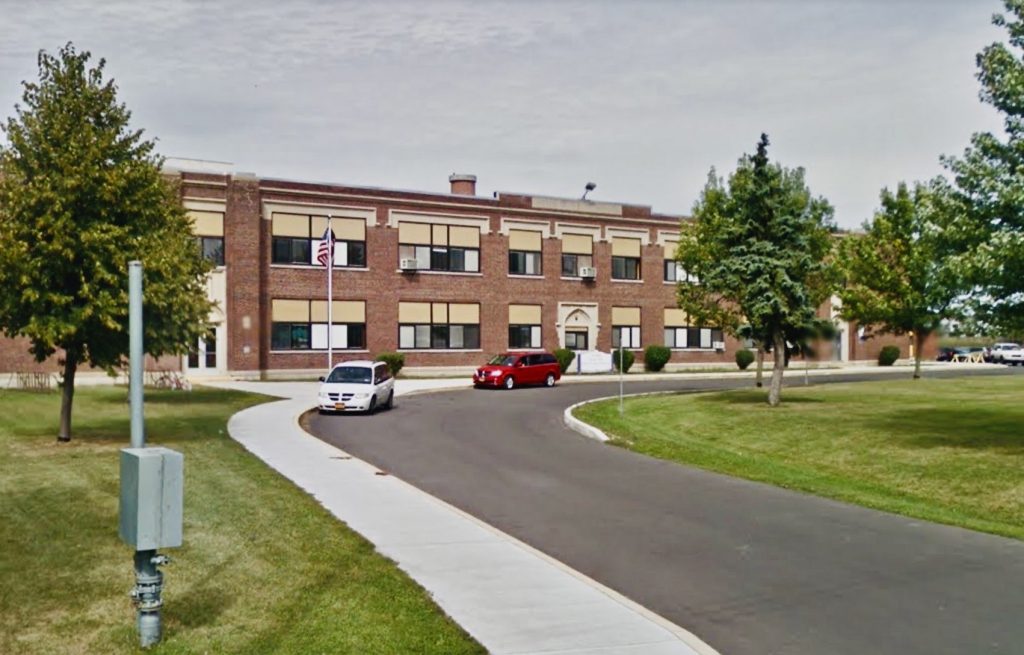
In 1934, as reported by the Cape Vincent Eagle on December 13, construction was expected to begin on a $50,000 proposed “City Stadium” on the north side adjacent to North Junior–
Councilman Newman said that the proposal calls for the grading of the ground northeast of the tennis courts on the North Junior High school grounds. After that work is done and the ground is leveled off satisfactorily, it is planned to lay a complete, up-to-date drainage system.
Then a gridiron will be laid out inside a quarter-mile cinder running track. A baseball diamond will be included in the program.
It is hoped that in another year it will be possible to procure sufficient funds to erect the rest of the stadium–the seats, dressing rooms and shower baths, Councilman Newman says.
While some of the work came to fruition, the actual construction of the stadium never took place as an opposing council member opposed the idea in 1936, stating that the city should make efforts to claim the County Fairgrounds and seek efforts there.
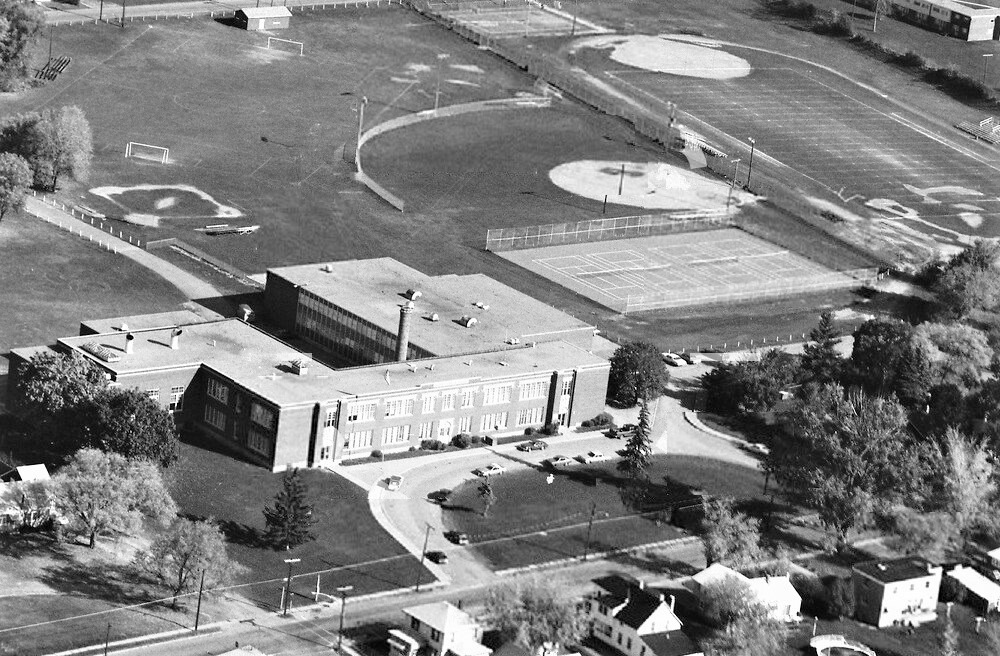
As Watertown’s population peaked and gradually declined for several decades, North Junior was no longer needed in the late 1970s and early 1980s, and the school was consolidated with the South, now known as Case Junior High School, next to the current Watertown High School on Washington Street, which opened in 1949.
As the City School District continued to shuffle and make changes during the 1980s after the closure of North Junior, it would get new life in the later part of the decade and become known as North Elementary after the closure and consolidation of the Meade Street School. The building underwent renovations at the time and continues to operate as the second elementary school on East Hoard Street, along with neighboring Starbuck School located a block away.
Interested to learn more about the old schools of Watertown, N.Y.? Click here.
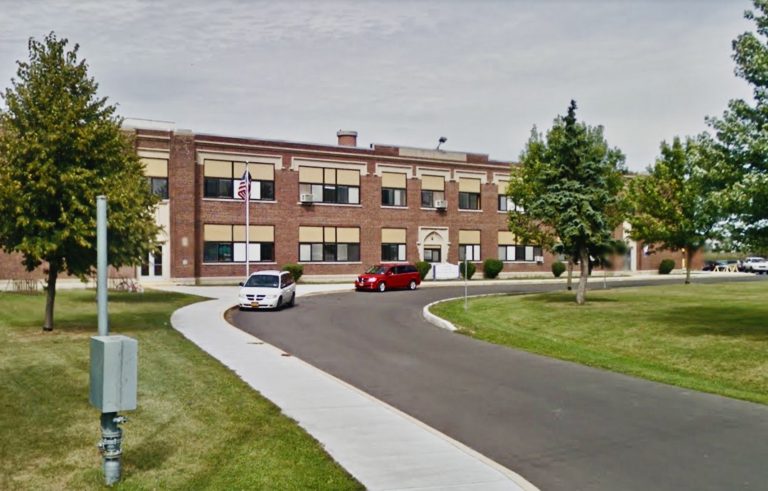
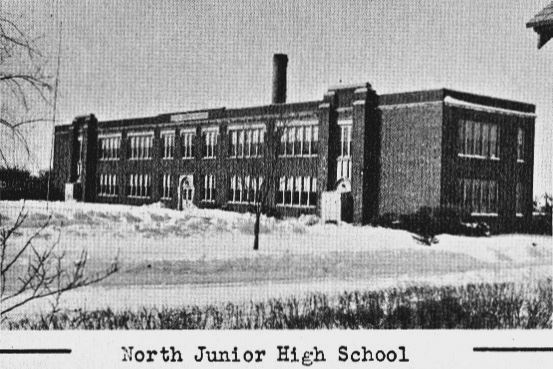


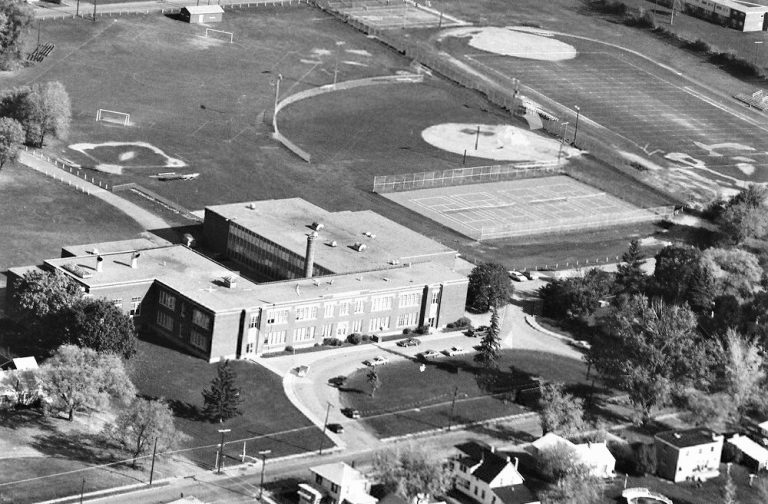
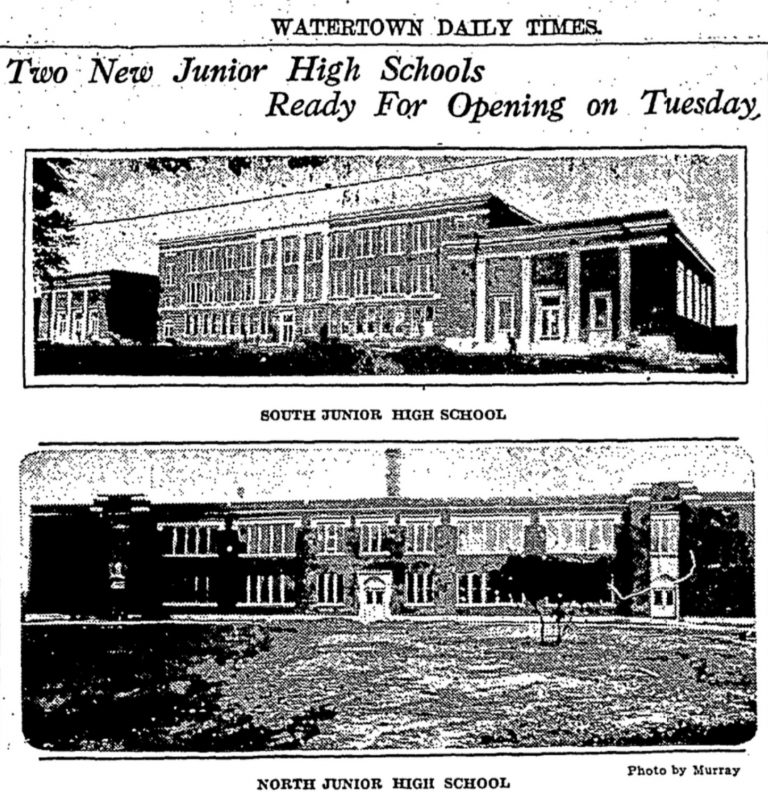
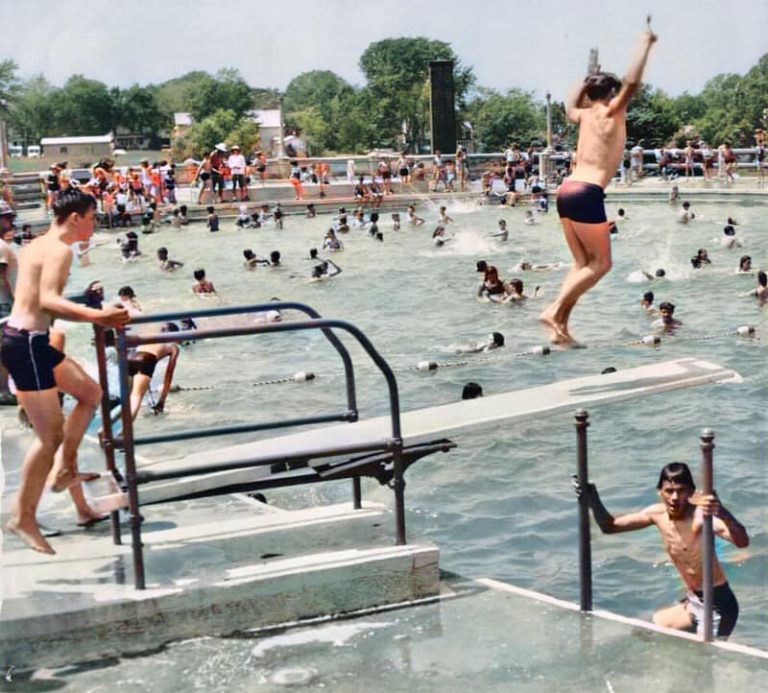


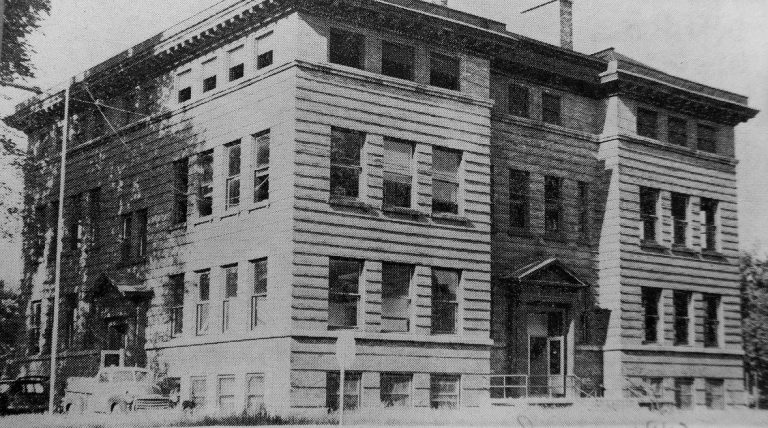


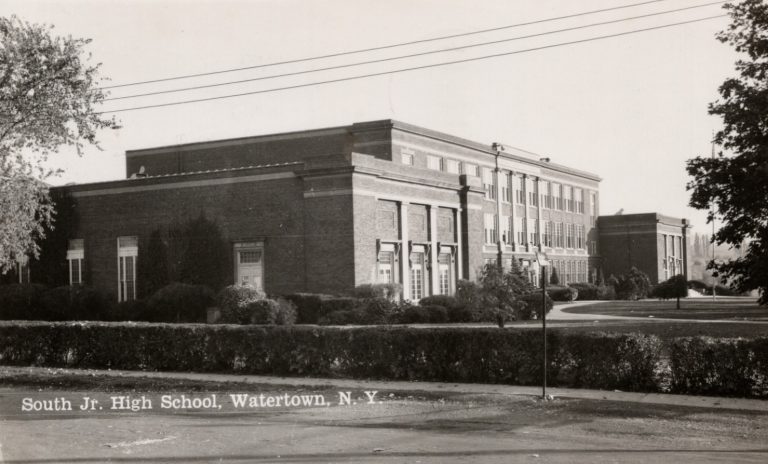

2 Reviews on “North Junior High – North Elementary (1929 – Present)”
From the time I entered school, I never had to walk more than two blocks to class from my home in Cloverdale, a housing project built in 1951 for the Baby Boom. It was bordered by Hoard and Division Streets and Starbuck Avenue.
I started school at Starbuck Elementary the year it opened in 1953 to replace the old Pearl Street School a few blocks away.
I went to North Junior HIgh in 1960 for grades 7-9, then on to Watertown High until I graduated in 1966.
I went to Starbuck elementary for kindergarten (Miss Grant’s class, Miss Dano was the principal, my mother, Genevieve Percy, was her secretary, 54/55). First grade through third grade I attended Lansing St school (55-58). Miss Dano was principal of Lansing St also. Fourth grade through sixth grade was back at Starbuck (58-61). Then seventh through 9th grade at North Junior high. Mr. Charles Flynn was principal, Mr. Thor Ottersland was vice principal, my mother was secretary. My father was president of the Board of Education, Lyle H. Percy. 61-64. Then Watertown High 64-67.